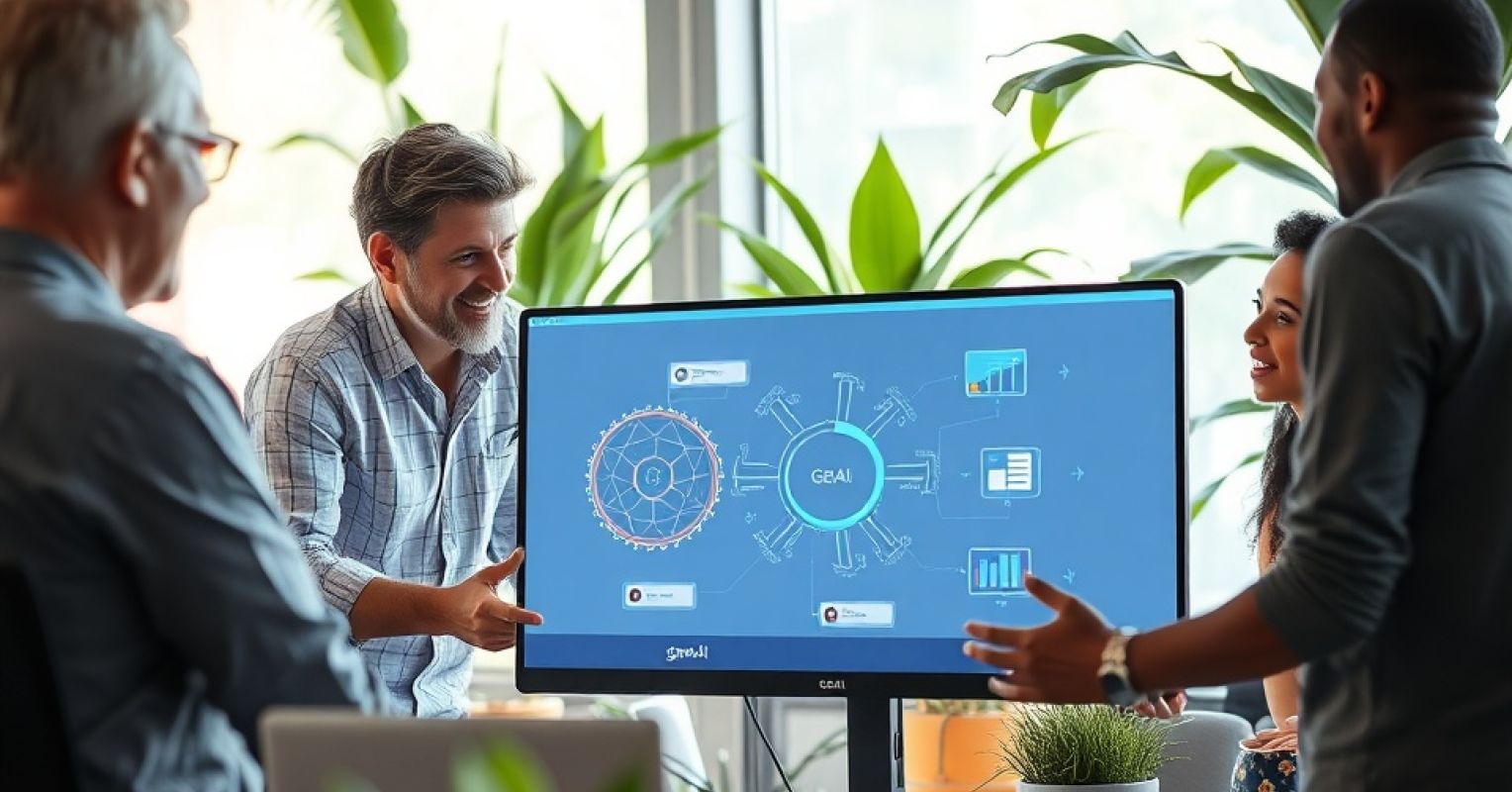#human-ai-collaboration
#human-ai-collaboration
[ follow ]
#ai-assisted-design #generative-ai #ux-prototyping #design-intuition #ai-agents #business-transformation #ai
fromPsychology Today
1 week agoWhy AI and Human Thought Need to Stay Separate
Dialogue and learning thrive when two "minds" challenge each other from separate vantage points. Structural separation keeps collaboration alive, turning distance into the space where insight forms. In my earlier post on parallax cognition, I proposed that depth in thinking comes from contrast, not convergence. When two distinct perspectives-human and artificial-observe the same problem from different computational vantage points, something new emerges.
Artificial intelligence
Artificial intelligence
fromFortune
2 weeks agoGoldman's chief information officer has 4 tips on how to AI-proof your career, including 'posing provocative, non-obvious questions' | Fortune
Professionals should shift from task execution to orchestrating hybrid human-AI teams, asking provocative questions and coordinating AI to amplify creativity and outcomes.
fromFortune
2 weeks agoYour new teammate is a machine. Are you ready? | Fortune
Companies across various industries are investing heavily in AI to enhance employee productivity. A leader at the consulting firm McKinsey says he envisions an AI agent for every human employee. Soon, a factory manager will oversee a production line where human workers and intelligent robots seamlessly develop new products. A financial analyst will partner with an AI data analyst to uncover market trends. A surgeon will guide a robotic system with microscopic precision, while an AI teammate monitors the operation for potential complications.
Artificial intelligence
fromeLearning Industry
3 weeks agoAI Adoption: A Tale Of Three Organizations-And The L&D Leader's Opportunity
It's 2025, and AI is no longer knocking at our doors: It's already in the building. Our people are using AI for a wide range of daily tasks, the demand for candidates with AI skills is growing, and AI is itself an important tool in the recruiting process. Meanwhile, L&D and talent leaders have moved beyond outsourcing rote tasks to AI and are now engaging it as a strategic and creative partner.
Artificial intelligence
Artificial intelligence
fromThe Hacker News
4 weeks agoHow Leading Security Teams Blend AI + Human Workflows (Free Webinar)
Balanced workflows that intentionally combine human judgment, rules-based automation, and targeted AI produce explainable, reliable, and adaptable outcomes for security and operations.
fromMedium
1 month agoThe Art of Invisible AI: What Granola's 70% Retention Teaches Us About Product Design
Sarah closed her laptop after another marathon day of back-to-back meetings. She glanced at her phone and smiled, a notification from Granola had already transformed her scattered notes from six different calls into beautifully organized summaries. No awkward meeting bots had invaded her calls. No clunky interfaces demanded her attention. The AI had simply worked. Invisibly. Perfectly. This moment captures something profound happening in product design right now: the rise of invisible AI that augments rather than replaces human intelligence.
Artificial intelligence
fromPsychology Today
1 month agoWhen AI Overrules You
Imagine you're working in a three-person team on a challenging bridge design project. Every decision about every truss is critical in the iterative design process. You have a good idea for the next design move to optimise the strength-to-weight ratio for a given truss. You state your case, and two of your teammates disagree, so you're outvoted. Now imagine that both of those teammates were artificial intelligence (AI) agents that overruled you.
Artificial intelligence
fromThe Atlantic
2 months agoA Better Way to Think About AI
Sometimes it seems the most direct route is to automate wherever possible, and to keep iterating until we get it right. Here's why that would be a mistake: imperfect automation is not a first step toward perfect automation, anymore than jumping halfway across a canyon is a first step toward jumping the full distance. Recognizing that the rim is out of reach, we may find better alternatives to leaping-for example, building a bridge, hiking the trail, or driving around the perimeter.
Artificial intelligence
fromFortune
3 months agoSalesforce surpasses 1 million AI agent-customer conversations, says finance chief
Our support teams are able to focus on more complex customer questions. These are engagements that really require human judgment, creativity, empathy—all things that AI can't do.
Artificial intelligence
Artificial intelligence
fromMarTech
6 months ago5 things we learned about AI at the Spring 2025 MarTech Conference | MarTech
AI was a major focus at the Spring 2025 MarTech Conference, influencing various sessions and discussions.
Marketers are encouraged to start small with AI initiatives and gradually scale for greater impact.
[ Load more ]





